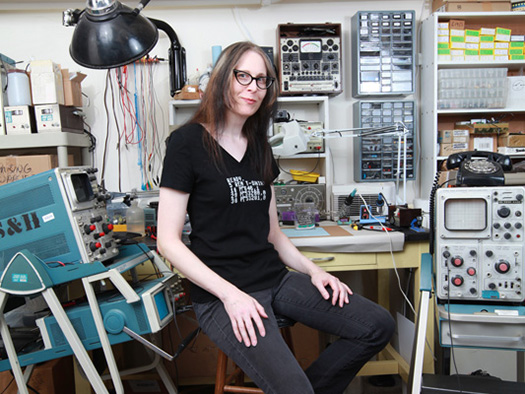

Fran Blanche’s workshop is more than a place to unwind. It’s home. “I put a bed in my office,” she says. Her fashion business is downstairs; upstairs is a music studio and a laboratory with 30 years’ worth of tools. A private collector recently asked Blanche to study part of his Apollo-era Launch Vehicle Digital Computer (LVDC), which NASA designed to fly a Saturn V rocket. “All modern boards would come to emulate it,” Blanche says. “Trouble is, there’s no information about how it was constructed.”

1) Tektronix 564B oscilloscope. Blanche owns two, and they help her examine DC- and audio-frequency signals.
**2) Articulated dental-exam lamp. **Designed in the 1940s, the lamp has a tightly focused beam that gives Blanche a clear view of a project from any angle.
3) Homemade adjustable DC-power supply. Whatever current and voltage a project requires, Blanche’s custom-built device can usually provide it.
4) Heathkit 5-watt resistor substitution box. No schematic is perfect. This device helps test various resistances in a circuit before installing the real deal.
5) 25-watt Weller soldering iron. “I have used this iron since 1978, and it has never failed,” says Blanche.

**Saturn vs. LVDC: **The launch-computer assembly could autopilot Apollo’s 363-foot-tall, 6.2-million-pound Saturn V rockets. Dozens of page-assembly boards like this one comprised each of the LVDC’s three computers. By carefully dissecting a board, Blanche uncovers its components and construction methods.
_This article originally appeared in the August 2014 issue of _Popular Science.
